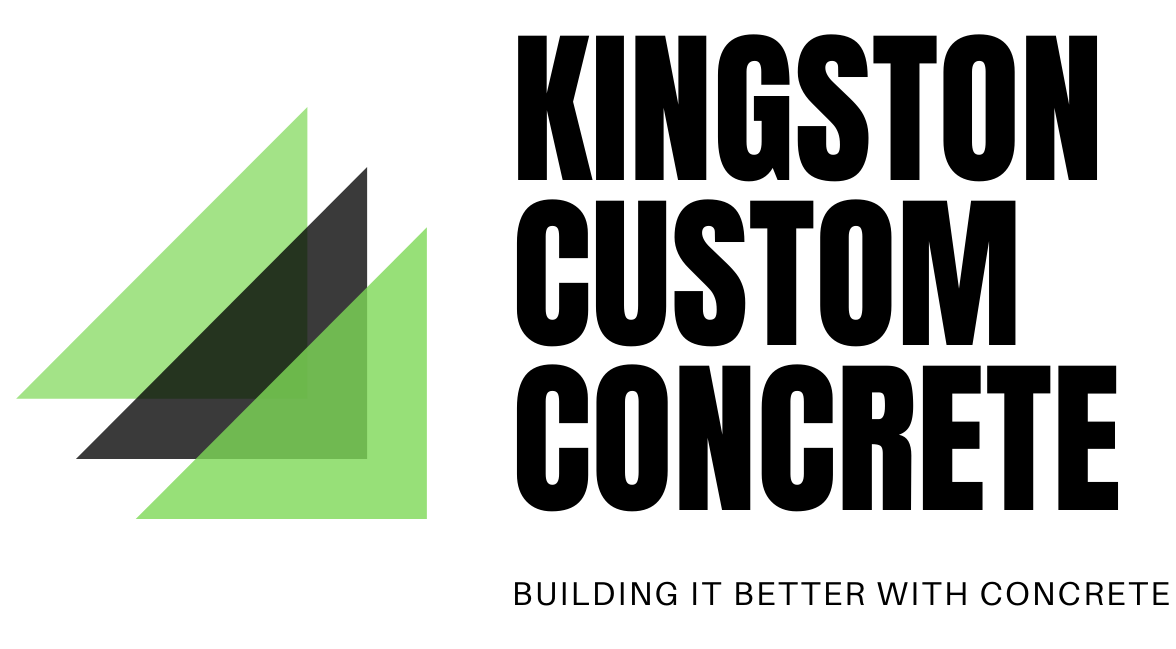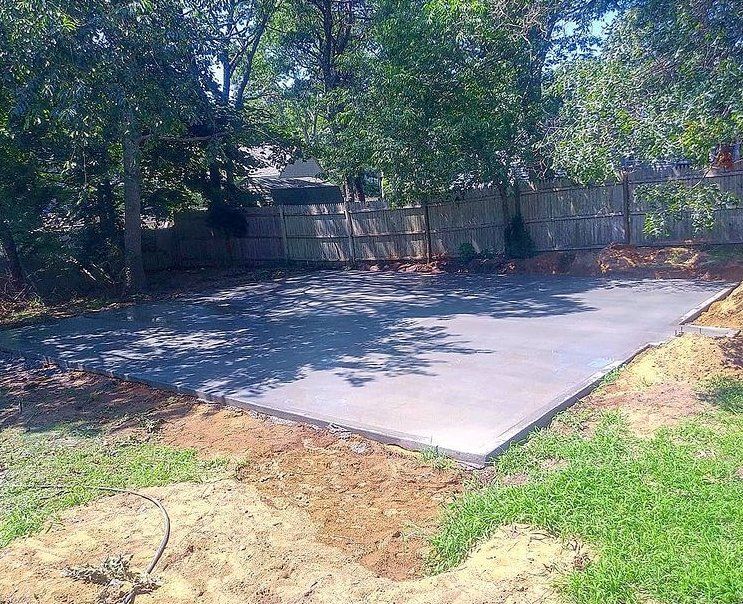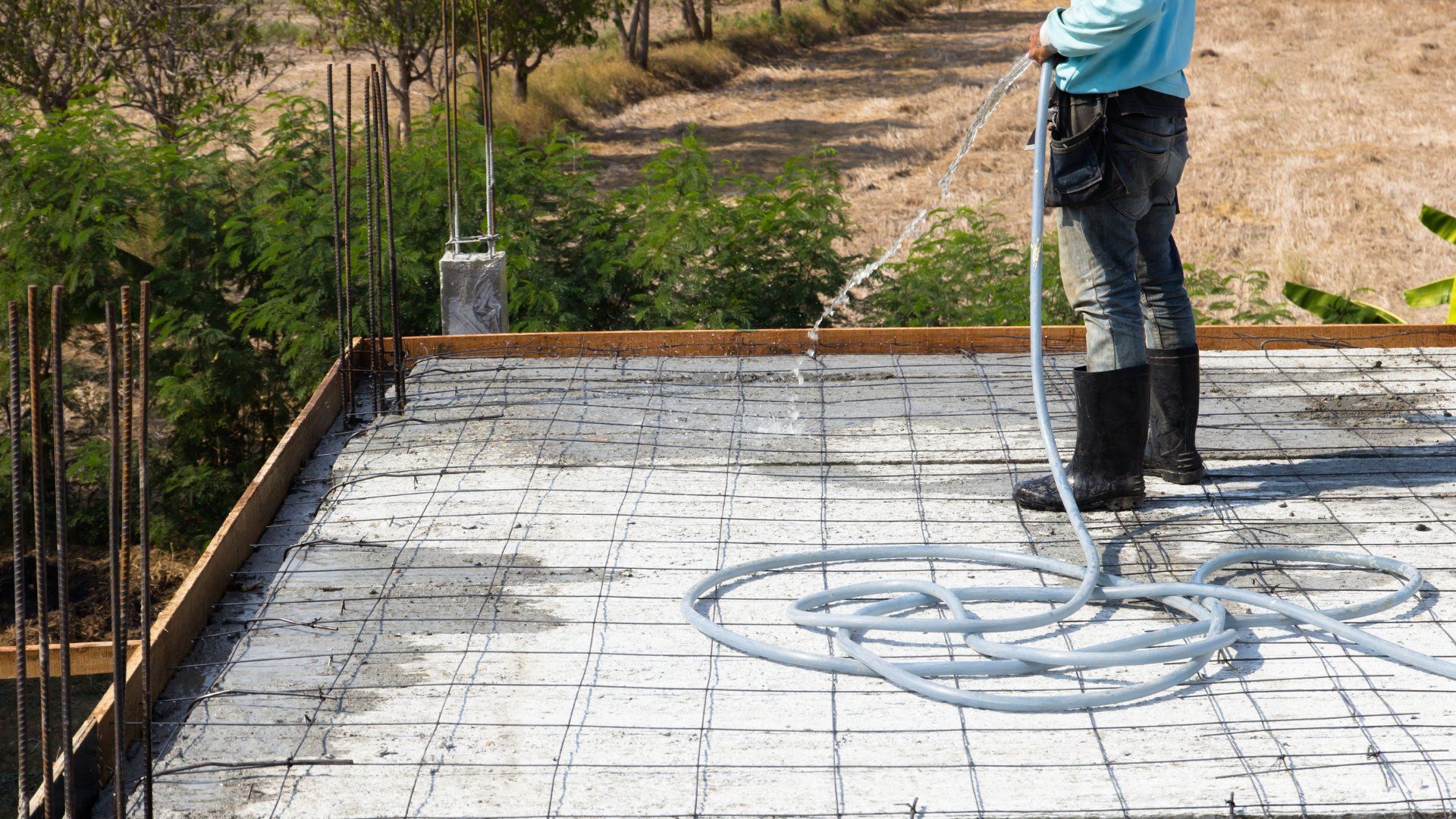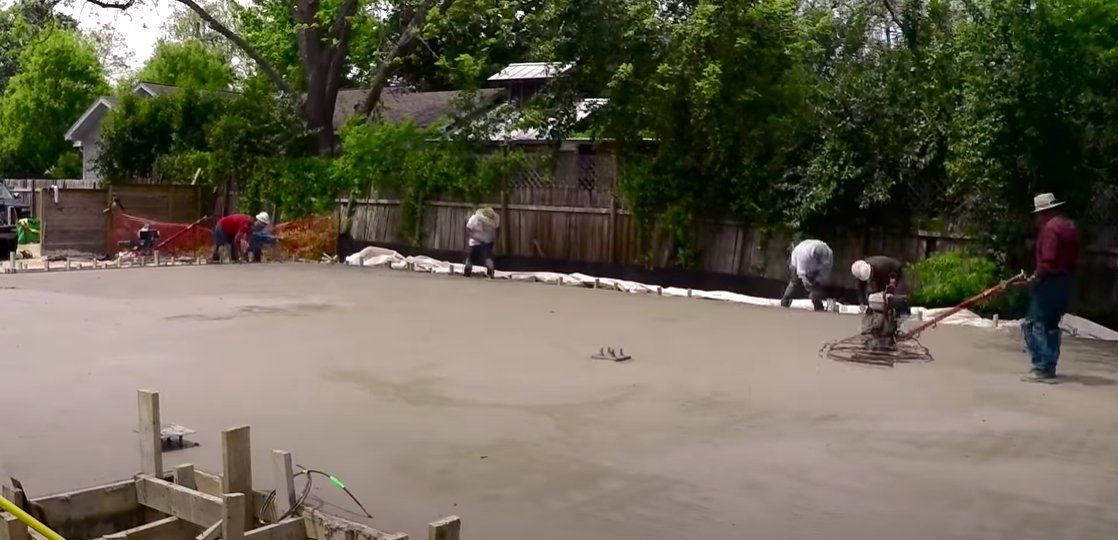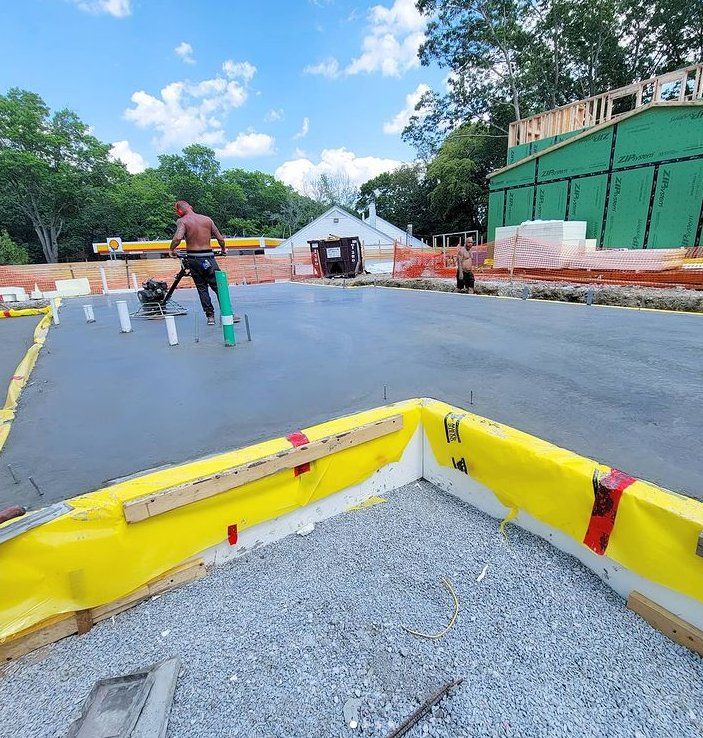Concrete Slab Kingston
Concrete is a great material for the home, because it's both durable and beautiful. When you lay your slab down on grade correctly there are some things to make sure of though- like knowing what steps need taken in order get everything done smoothly. Our team has been doing this kind of work day after day so that we can help homeowners with their new project.
What Does it Take To Lay a Slab on Grade?
There are many factors that determine if your concrete slab is level and some may not be something you expected. It turns out, the surface of the ground has way more influence than most people think.
Grade is an important factor when it comes to installing a concrete slab. In order for you or anyone else building on top of this ground, they need something that will provide them with stability and durability so their structure can withstand weathering over time without falling apart beneath its own weight. Ground conditions can have a significant impact on which concrete slab is appropriate. If your ground has hard surfaces, you will want to opt for lower-grade slabs so they don't break easily under pressure; however if there's some give in the earth around it (like clay or sand), then consider upgrading to a higher-grade slab.
It is important to consider the formwork when designing your slab. For instance, an asphalt installation with stamped forms would require thicker pieces than if you used concrete and there's no pattern in place at all. The many types of concrete slabs have a significant effect on their thickness. These include stamped, conical and domed forms as well as V-shaped profiles for increased strength or durability in certain applications where they're needed most such at bridges & buildings with swimming pools attached to them.
How much concrete do we need?
The amount of concrete required for your foundation will depend largely on the size and thickness. For example, if you choose a thick slab to cover an area with limited space it may not be enough while using thin layers can result in too much material being used up before reaching baseboards or flooring levels which could lead one having to exceed their specifications by quite some margin so make sure there's room left over.
How strong will the foundation be?
The stronger your foundation, the better it will withstand minor cracks and movements. The thicker these foundations are made out to be by their designers or architects who designed them for durability rather than just appearance alone. Higher grades of concrete are stronger and more durable than lower ones. They can withstand tension without deteriorating as quickly because they have a higher modulus elasticity, which means that the molecules themselves will stretch less under pressure from your weight or any other force applied upon them.
Joints are an integral part of any building's structure. They can be seen as points where two or more pieces come together to form a whole, sturdy unit that will last for years with proper care and maintenance- but not all joints have been created equal. The type you choose should depend on how much movement your concrete slab allows; if it’s going in a place where there might potentially be flexing happening then consider using tiebacks instead so they brace against horizontal stresses while giving vertical ones plenty room. In order for your tiebacks to not only look good but also function well, they must be installed correctly. Make sure you balance them so that no one side becomes weak or unstable due to their positioning in relation with each other and the building structure as a whole.
How much weight can the slab hold?
The load capacity and structural stability of a slab is determined by both its strength as well the density it was designed to hold. The four different types of load capacity are used for purposes such as strengthening a structure or determining how much it will wear over time. First, the concrete slab reinforcement strength and thickness depend on mean times between floor slabs wall in order to distribute loads more evenly while also taking their weight into account; this is known as "concrete cycle theory." Second there's random bearing - where each piece has its own unique rate so that no one section bears all burden but rather share some together through mutual support at appropriate points throughout building construction.
The concrete slab is the foundation. It's what holds everything together, and when it comes to size-wise limitations there are three things you need know: weight capacity (how much material can fit on), cure time in minutes/hours depending if its cold or hot outside; height requirement refers to just that - how tall it needs to be before being deemed stable enough for use, while rebar length means something very technical called "rebar."
